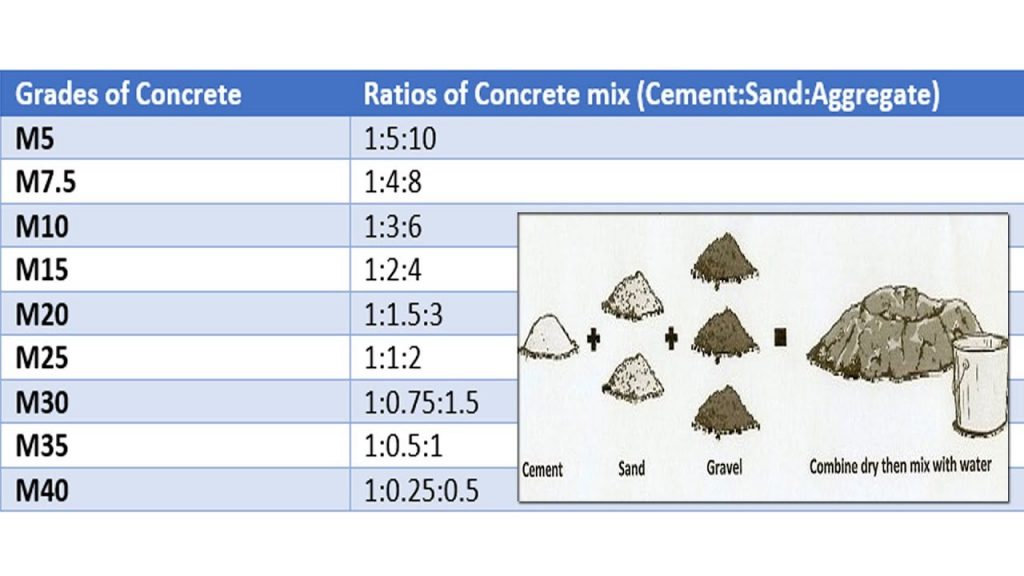The concrete mix ratio is the specific proportion of materials that gives concrete, a common building material that is the foundation of numerous structures, its strength, and durability. This ratio is the formula for making concrete that will endure the test of time and support the weight of constructions. In this blog, we dig into the world of concrete mix ratios, outlining what they are, how they function, and why they are essential in building.
What is a concrete mix ratio?
A concrete mix ratio is a proportionate combination of various concrete-making ingredients. These ingredients typically include cement, water, sand, and aggregates (such as gravel or crushed stone). The precise ratio of these components determines the concrete’s strength, workability, durability, and other properties.
Components of Concrete Mix Ratio:
- Cement: Cement is the binding agent that holds the concrete mix together. It reacts with water to form a solid matrix.
- Water: Water aids in the mixing process and activates the cement. The right amount of water is crucial, as too little can result in a dry mix, while too much can weaken the concrete.
- Sand: Sand provides bulk to the mix and improves workability. Additionally, it lessens shrinkage and cracking.
- Aggregates: Aggregates, usually in the form of gravel or crushed stone, increase the mix’s strength and lower its cost. They also help prevent the concrete from shrinking excessively.
Explanation of Mixed Ratio
Cement, sand, and aggregate quantities are frequently used to represent concrete mix ratios. A typical mix ratio for all-purpose concrete, for instance, is 1:2:4, which equals one part cement, two parts sand, and three parts aggregates. It is common to write this ratio as “1:2:4.”
For different applications, different mix ratios are utilized. A ratio of 1:1.5:3 or even 1:1:2 may be used to create stronger concrete for structural elements like beams and columns, whereas a ratio of 1:3:6 may be used to create a more workable mixture for pavement.
Why Mix Ratios Matter:
- Strength: The compressive strength of the concrete is directly influenced by the mix ratio. An effective mix guarantees that the concrete can support loads.
- Workability: Concrete is simpler to put, shape, and finish when the proper mix ratio is used. This is crucial for achieving a smooth surface and avoiding air voids.
- Durability: Proper proportions contribute to the concrete’s resistance to weathering, cracking, and other forms of deterioration.
- Economy: Using the correct mix ratio can reduce material costs and prevent wastage.
Calculating Mix Ratios
To calculate the mix ratio for a specific project:
- Determine the desired concrete properties, such as strength and workability.
- Consult local building codes and specifications for any required mix ratios.
- Calculate the proportions of cement, sand, and aggregates based on your chosen mix ratio.
- Measure and mix the ingredients thoroughly to ensure a uniform distribution.
In conclusion, the core of concrete construction is the concrete mix ratio. Understanding and using the right mix ratio is crucial for maintaining the endurance, strength, and integrity of your constructions, whether you’re working on a tiny DIY project or a significant infrastructure development. It literally serves as the foundation for the built environment.

